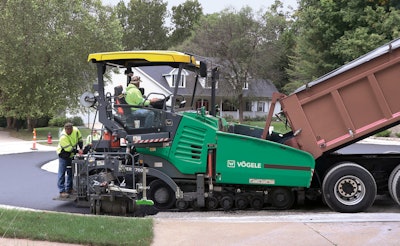“Building a Brighter Future: Navigating the Shift to Advanced Technologies in Construction”
The construction industry is at a crossroads. Gone are the days of manual labor, dusty offices, and slow project timelines. The digital revolution has swept the sector, bringing with it an array of innovative technologies that promise to revolutionize the way we design, build, and deliver buildings. However, with this rapid transformation comes a pressing question: how can construction professionals keep up?

Leveraging Change Management Models for Successful Adoption

Change management is foundational to organizational development and growth, particularly in the construction industry, which is increasingly reliant on technology to remain competitive and efficient. A prominent model in this domain is Kurt Lewin’s 3-step change model. This model provides a structured approach to managing change, making it highly relevant for construction professionals integrating new technological tools and processes.

Introduction to Kurt Lewin’s 3-Step Change Model and its Applications
Kurt Lewin, a renowned social psychologist, introduced the 3-step change model in the 1940s. The model is a framework that guides organizations through the process of change, ensuring a smooth transition from the current state to a desired future state. The three stages are unfreezing, changing, and refreezing, each playing a crucial role in the successful adoption of new technologies.

Implementing the Unfreeze, Change, and Refreeze Stages in Construction Technology Adoption
Applying Lewin’s model to the construction industry involves specific actions in each stage. In the unfreezing phase, the goal is to prepare the organization for change. This stage requires clear communication about the need for change and the rationale behind it. In construction, this might involve explaining to workers and management how new software or hardware can improve efficiency and safety, leading to better project outcomes.
The changing phase focuses on the actual implementation of new technologies. This involves training, piloting the technology, and gathering feedback to refine the process. It is during this stage that construction professionals begin to work with new tools and encounter practical challenges that need to be addressed in real-time.
The final refreezing phase is crucial for solidifying the change. Once new technologies are in place and operating efficiently, the organization should work to stabilize the changes and incorporate them into routine operations. This phase also involves celebrating successes and reinforcing the benefits of the technology.
Case Studies of Successful Technological Adoption in Construction using Change Management Models
One notable example of successful technological adoption in the construction industry is the implementation of John Deere’s JDLink Connectivity. By integrating JDLink into their fleet, construction companies could monitor machine performance in real-time, leading to more efficient maintenance and operation. This case study showcases how a well-structured change management approach can lead to significant operational improvements.
Another example involves the Wirtgen Group, which has successfully merged its WITOS FleetView system with John Deere’s Operations Center. This integration allows for a comprehensive view of all machines across different OEMs, streamlining operations and decision-making processes. The successful adoption of this total jobsite solution is a testament to the effectiveness of a structured change management approach, particularly through the phases of unfreezing, changing, and refreezing.
Implementing Total Jobsite Solutions for Enhanced Efficiency
The integration of technology in the construction industry has led to the development of total jobsite solutions that combine both software and hardware advancements. These solutions aim to create a seamless operational environment, reducing inefficiencies and enhancing productivity. This section explores the benefits, practical considerations, and real-world examples of total jobsite solutions in the construction sector.
The Benefits of Integrated Software and Hardware Solutions in Construction
The integration of software and hardware technologies offers numerous benefits to construction professionals. Through the use of advanced software, such as machine control systems and fleet management platforms, construction companies can optimize their workflows and reduce downtime. Simultaneously, implementing advanced hardware, like smart sensors and IoT-enabled devices, allows for the real-time monitoring of equipment and site conditions, leading to proactive maintenance and increased machine uptime.
For instance, the integration of Telematics and Fleet Management Systems by John Deere and Wirtgen Group enables fleet managers to monitor GPS data, fuel consumption, and machine performance in real-time. This data can be used to optimize fleet operations, streamline maintenance schedules, and enhance project planning and execution.
Practical Considerations for Implementing Total Jobsite Solutions
While the benefits of integrating total jobsite solutions are evident, several practical considerations need to be addressed to ensure a smooth adoption process. These considerations range from employee training and change management to the technical aspects of system integration.
- Employee Training and Support: Training employees on new technologies is essential. This includes not only the technical aspects but also understanding the value and benefits of the new solutions for their day-to-day work.
- Technical Integration Challenges: Integrating software and hardware from multiple OEMs can pose technical challenges. Ensuring interoperability and system compatibility is crucial to avoid operational disruptions.
- Change Management: Effective change management strategies are necessary to address resistance and foster a positive attitude toward the new technologies. This involves clear communication, engagement, and support throughout the transition period.
Real-World Examples of Successful Total Jobsite Solution Implementations in Construction
Several construction companies have successfully implemented total jobsite solutions, leading to enhanced efficiency and productivity. For example, a major highway construction project in the United States integrated a comprehensive fleet management system and telematics solutions to monitor machine performance and optimize operations. By using the John Deere Operations Center, the company was able to manage its fleet more effectively, reducing downtime and improving overall productivity.
Similarly, a large-scale infrastructure project in Europe utilized a combined hardware and software solution to streamline its construction processes. By integrating advanced surveying equipment and real-time data analytics, the construction crew could adjust their work based on real-time data, leading to more accurate and efficient work.
Future-Proofing Construction Operations through Technological Advancements
As the construction industry continues to evolve, embracing emerging technologies such as artificial intelligence (AI) and machine learning (ML) becomes essential for future-proofing operations. These technologies have the potential to revolutionize the construction industry, but the transition requires a strategic and well-planned approach.
The Potential of AI and Machine Learning in Construction Technology
AI and machine learning can significantly enhance construction operations by providing predictive analytics, improving decision-making, and automating routine tasks. For example, AI can help predict machine downtime by analyzing historical data, allowing proactive maintenance. Machine learning algorithms can also optimize resource allocation and improve safety by identifying potential hazards based on real-time data.
Consider the use of AI in machine control systems, which can adjust settings in real-time based on job site conditions. This not only improves the precision of work but also enhances the safety and efficiency of the construction process. For instance, in a project involving the paving of a high-traffic highway, AI could adjust the paver’s feeder speed and screed level automatically, ensuring optimal material usage and quality.
Preparing Construction Professionals for the Challenges and Opportunities of Emerging Technologies
The adoption of AI and ML requires a workforce that is not only skilled in using these technologies but also equipped with the mindset to embrace and adapt to change. Training and continuous learning programs are essential to prepare construction professionals for these new technological advancements. This training should cover not only the technical aspects but also the behavioral and cultural changes that accompany technological shifts.
For instance, John Deere’s Operations Center provides a platform for ongoing training and support, enabling operators to learn about and understand the new functionalities and data analytics capabilities of the software. Regular updates and training sessions ensure that the workforce remains competent and confident with the new technologies.
The Role of Unionjournalism in Supporting the Construction Industry’s Technological Evolution
Unionjournalism plays a vital role in guiding the construction industry through its digital transformation. By providing insightful and educational content on the latest technological advancements, Unionjournalism helps construction professionals understand how to adapt and integrate these technologies into their workflows. Additionally, Unionjournalism offers case studies and expert analyses that highlight the practical applications and benefits of these technologies, fostering a culture of innovation and continuous improvement within the industry.
Through its comprehensive coverage, Unionjournalism supports the industry in navigating the challenges and opportunities presented by emerging technologies. By staying informed about the latest developments, construction professionals can make informed decisions that drive efficiency, safety, and profitability.
Conclusion
In conclusion, the 3 phases of technology adoption – understand, adjust, and integrate – offer a crucial framework for construction professionals to navigate the ever-evolving landscape of technology. By understanding the current state of their operations, adjusting to new tools and processes, and integrating technology seamlessly into their workflow, construction companies can unlock greater efficiency, productivity, and competitiveness. The significance of this framework lies in its ability to help construction pros adapt to rapidly changing technological advancements, ultimately driving business growth and success.
As the construction industry continues to evolve, the importance of embracing technology will only continue to grow. As new innovations emerge, the ability to understand, adjust, and integrate will be crucial for staying ahead of the curve. Looking ahead, we can expect to see even greater adoption of technologies such as artificial intelligence, machine learning, and the Internet of Things (IoT) in the construction sector. By embracing these trends and adopting a phased approach to technology adoption, construction companies will be well-positioned to capitalize on the opportunities that these advancements bring.
Ultimately, the key to success in the construction industry lies in embracing a culture of continuous learning and adaptation. By understanding, adjusting, and integrating technology into their operations, construction pros can drive innovation, improve outcomes, and stay ahead of the competition. As the industry continues to evolve at a rapid pace, it is essential to remain agile, adapt quickly to change, and harness the power of technology to drive growth and success.
